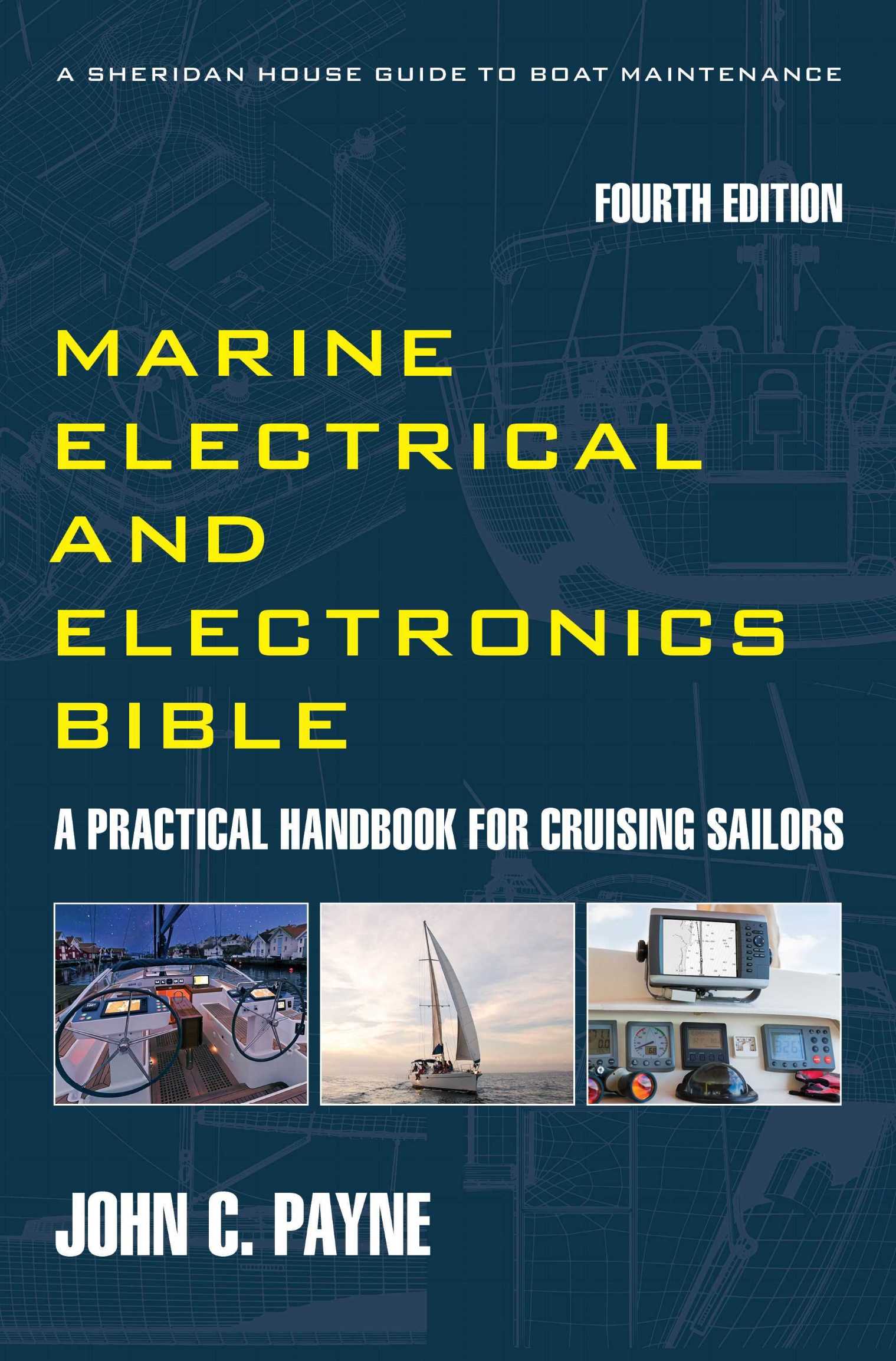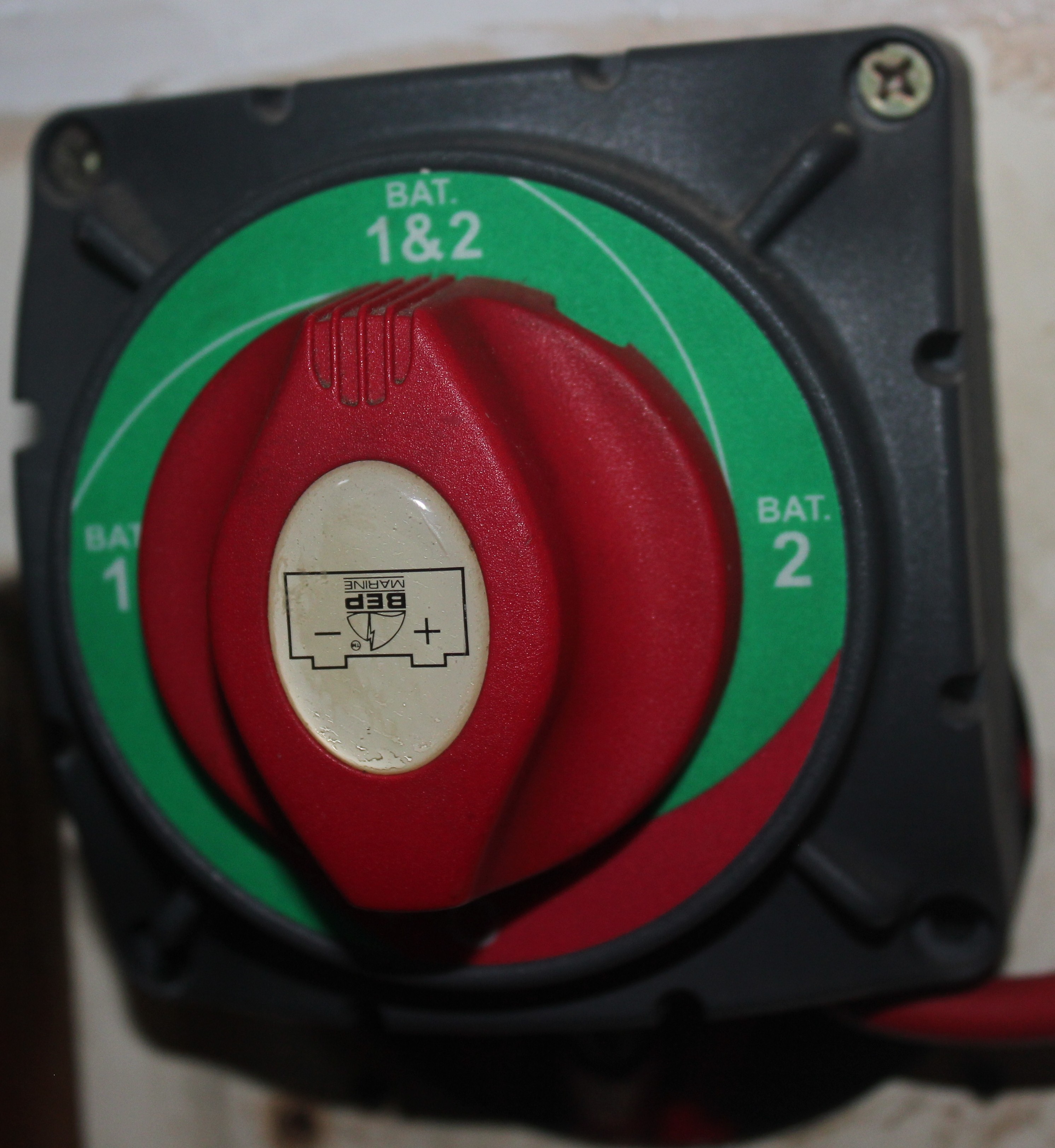Marine Battery Selector Switch
The Marine Battery Selector Switch or battery master switch, like all electrical equipment, must be selected based on the current demands to be applied to it. They also should be rated to at least the rating of the cables that are connected to the switch. Switches generally have standardized current ratings and nominally most switches are continuously rated at 250 - 300 amps with short term intermittent ratings of 600 amps.
Heavy duty rated switches have ratings around 600 amps and 1000 amps respectively, and some also quote a cranking rating which is a higher current for a shorter period. The short-term rating generally applies to the heavier current that is applied during engine starting which has an initial very high current spike when the starter motor overcomes the engine inertia . The continuous rating generally applies to the battery alternator charging current which is much less. In reality master switches rarely have the nominal continuous rating applied, which is generally less than 100 amps even on comparatively large engines. Switch current ratings are specified as a function of time and at a nominal temperature. The standard used for rating battery switches is Underwriters Laboratories UL standard 1107. The voltage rating for most battery switches is also 32 to 48 volts. Some may be lower at 24 and it is rare to see just a 12 volts rating.
Marine Battery Selector Switch Operation
The traditional sailboat power configuration is one start battery and one house battery, the latter often consisting of 2 batteries. You select Position 1 or 2 depending on which input the start battery is connected to and start the engine. It is always good practice to allow the start battery to recharge for 15 minutes if possible. Any electronics will also be supplied from this source in this case and the alternator is supplying the load. Then switch to Both for dual battery charging. When you reach your destination or are stopping you should then switch to the house battery, Position 1 or 2, so that house power comes off the house battery and that the start battery is not drained. In many boats there is a Starting type battery and a Deep Cycle battery. Deep cycle batteries are not designed for starting engines and if you start the engine on <BOTH> <1 + 2> you will be unnecessarily stressing your house battery as well as impressing a large surge on your electronics power supplies. Also be aware that the paralleling of a heavily discharged battery and a fully charged one during charging can sometimes cause some power instability. The fully charged start battery will start to equalize to the house battery and discharge it. It is good practice after you set off after a period using house battery to start engine on start battery and then switch to house battery so that it is rapidly recharged by the alternator. Read more in the latest 4th Edition of my book the Marine Electrical and Electronics Bible.
Marine Battery Selector Switch Installation
One of the major limiting factors with battery switch installation is the requirement to run heavy gauge electrical cables to the switch. This introduces voltage drops into circuits as well if the runs are long. In many smaller boats the master switch is generally located close to the batteries, but this is often a problem when looking for a protected location away from water and spray. Many however are mounted in exposed positions allowing water and salt spray to deteriorate the switches, so a quality switch rated for such conditions is essential. There is always a compromise involved between cable lengths and protection.
Marine Battery Selector Switch Terminals
The termination of cables to the switch terminals is also one that requires careful thought. The cable lugs should fit neatly onto the switch terminals, I have seen many where they are not and poor contact is made. Many switches don’t have washers or spring washers and this is recommended. The routing of cables through the relatively small cutout is often very difficult as heavy cable is not easy to bend. It is important not to stress the terminations. Applying stress to terminals often causes distortion and I have seen cases where this stress has caused movement of the terminal and created poor internal contacts on some of the cheaper units.
Marine Battery Selector Switch Wiring Configurations
Wiring configurations are generally related to the various charging and starting arrangements and some of these are displayed below. In all of these configurations the battery switch serves as isolation switch for the batteries, a battery source switch for supplying power to start the engine or supply house power to the boat systems, and finally to select the direction for charging current to go to the selected batteries. This circuit is a bidirectional one depending on the current flow. Please note Lithium-Ion (LiFePo) batteries are not approved for engine starting battery use. You absolutely should not use a battery switch to interconnect an engine start battery and a LiFePo battery bank. The two battery chemistries require different charging profiles and the system should be separate. That is a topic for another article and I constantly come across this and it can only end badly at some point.
Remote Marine Battery Selector Switch
Remotely operated master switches are now becoming quite common. These are essentially large current solenoids with a remote-control switch to energize the coil and switch on the power supply. The major advantages are that it significantly reduces the cable lengths required to run to the switch and back. It also allows the isolation to be close to the battery where it belongs and also has less of the common problems of mounting and operating the switch. This type of configuration does require some re-engineering and requires the complete separation of both the battery charging and engine starting circuits. This does away with the bidirectional arrangement or circuit sharing and had two unidirectional circuits. There are disconnect switches designed for Lithium-ion battery systems. The Marine Battery Selector Switch is common and make sure you know the installation issues and limitations.

